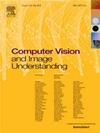Adversarial intensity awareness for robust object detection
IF 4.3
3区 计算机科学
Q2 COMPUTER SCIENCE, ARTIFICIAL INTELLIGENCE
引用次数: 0
Abstract
Like other computer vision models, object detectors are vulnerable to adversarial examples (AEs) containing imperceptible perturbations. These AEs can be generated with multiple intensities and then used to attack object detectors in real-world scenarios. One of the most effective ways to improve the robustness of object detectors is adversarial training (AT), which incorporates AEs into the training process. However, while previous AT-based models have shown certain robustness against adversarial attacks of a pre-specific intensity, they still struggle to maintain robustness when defending against adversarial attacks with multiple intensities. To address this issue, we propose a novel robust object detection method based on adversarial intensity awareness. We first explore potential schema to define the relationship between the neglected intensity information and actual evaluation metrics in AT. Then, we propose the sequential intensity loss (SI Loss) to represent and leverage the neglected intensity information in the AEs. Specifically, SI Loss deploys a sequential adaptive strategy to transform intensity into concrete learnable metrics in a discrete and cumulative manner. Additionally, a boundary smoothing algorithm is introduced to mitigate the influence of some particular AEs that challenging to be divided into a certain intensity level. Extensive experiments on PASCAL VOC and MS-COCO datasets substantially demonstrate the superior performance of our method over other defense methods against multi-intensity adversarial attacks.
鲁棒目标检测的对抗强度感知
像其他计算机视觉模型一样,目标检测器容易受到包含难以察觉的扰动的对抗性示例(ae)的影响。这些ae可以以多种强度生成,然后用于攻击现实场景中的目标探测器。对抗训练(AT)是提高目标检测器鲁棒性的最有效方法之一,它将ae融入到训练过程中。然而,尽管先前基于at的模型已经显示出对特定前强度的对抗性攻击的一定鲁棒性,但在防御多强度的对抗性攻击时,它们仍然难以保持鲁棒性。为了解决这个问题,我们提出了一种新的基于对抗强度感知的鲁棒目标检测方法。我们首先探索潜在图式来定义被忽视的强度信息与实际评估指标之间的关系。然后,我们提出了序列强度损失(SI loss)来表示和利用ae中被忽略的强度信息。具体而言,SI Loss部署了一种顺序自适应策略,以离散和累积的方式将强度转换为具体的可学习指标。此外,还引入了一种边界平滑算法,以减轻某些难以划分为特定强度级别的特定ae的影响。在PASCAL VOC和MS-COCO数据集上的大量实验充分证明了我们的方法在对抗多强度对抗性攻击方面优于其他防御方法。
本文章由计算机程序翻译,如有差异,请以英文原文为准。
求助全文
约1分钟内获得全文
求助全文
来源期刊

Computer Vision and Image Understanding
工程技术-工程:电子与电气
CiteScore
7.80
自引率
4.40%
发文量
112
审稿时长
79 days
期刊介绍:
The central focus of this journal is the computer analysis of pictorial information. Computer Vision and Image Understanding publishes papers covering all aspects of image analysis from the low-level, iconic processes of early vision to the high-level, symbolic processes of recognition and interpretation. A wide range of topics in the image understanding area is covered, including papers offering insights that differ from predominant views.
Research Areas Include:
• Theory
• Early vision
• Data structures and representations
• Shape
• Range
• Motion
• Matching and recognition
• Architecture and languages
• Vision systems
 求助内容:
求助内容: 应助结果提醒方式:
应助结果提醒方式:


